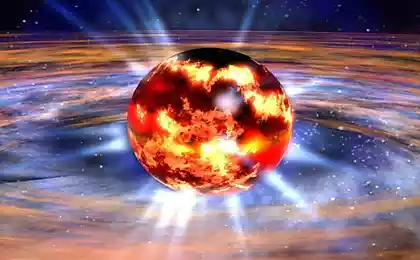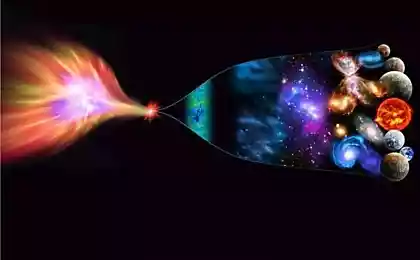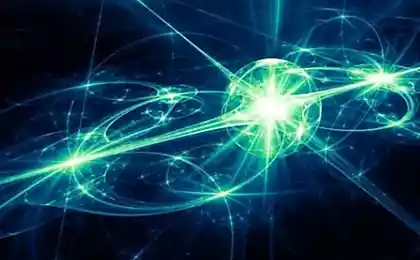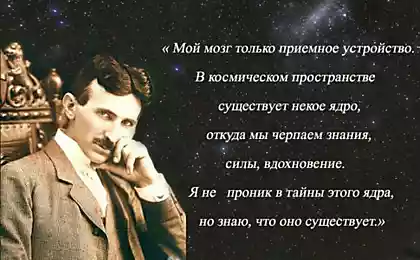801
Our universe is much, much easier than it seems
You will be surprised to hear that our universe is actually quite simple — it is our cosmological theories are unnecessarily complex, says one of the leading theoretical physicists in the world.
This conclusion may seem counterintuitive: in the end, to understand the true complexity of Nature, we have to think outside the box, explore things in more and more small scale, to add new variables in the equations to come up with "new" and "exotic" physics.
Someday we will figure out what dark matter is, get an idea of the whereabouts of gravitational waves — if only our theoretical model will become more developed and more... complicated.
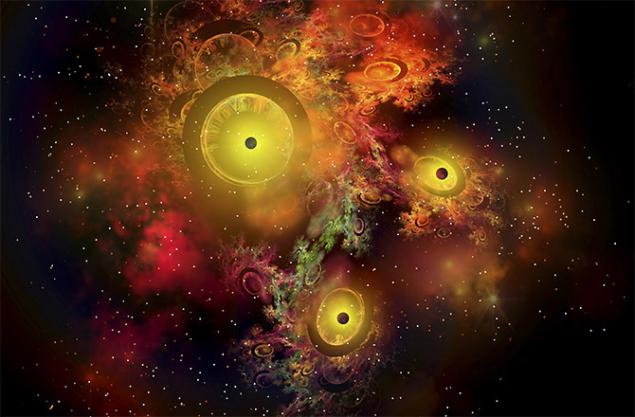
Not so, says Neil Turok, Director of the Institute for theoretical physics Perimeter in Ontario, Canada. According to Turk, if the universe, on the large and small scale, about something speaks to us, it's about its incredible simplicity. But to fully realize this, we need a revolution in physics.
In an interview with Discovery of Turks said that the major discoveries of recent decades have confirmed the structure of the Universe on cosmological and quantum scales.
"On a large scale, we made a map of the whole sky — the cosmic microwave background and measured the evolution of the Universe, its evolution, the process of its expansion... and these discoveries show that the universe is strikingly simple," he says. In other words, can you describe the structure of the Universe, its geometry, the density of matter is just a number".
The most exciting conclusion of this reasoning is that to describe the geometry of the Universe is just a single number is easier than to describe numerically the simplest known atom — the hydrogen atom. The geometry of the hydrogen atom is described by three numbers, which arise from quantum features of the electron orbiting around the proton.
"This tells us that the universe is smooth, but has a small level of fluctuations is described by this number. And that's all. The universe — the simplest thing we know."
Somewhere out there, on the opposite end of the scale, something similar happened when physicists explored the Higgs field, using the most complex machine ever built — the Large hadron Collider. In 2012, when historically, physics has discovered a particle, the mediator of the Higgs field — the Higgs boson — it was the simplest type, described by Standard model particles.
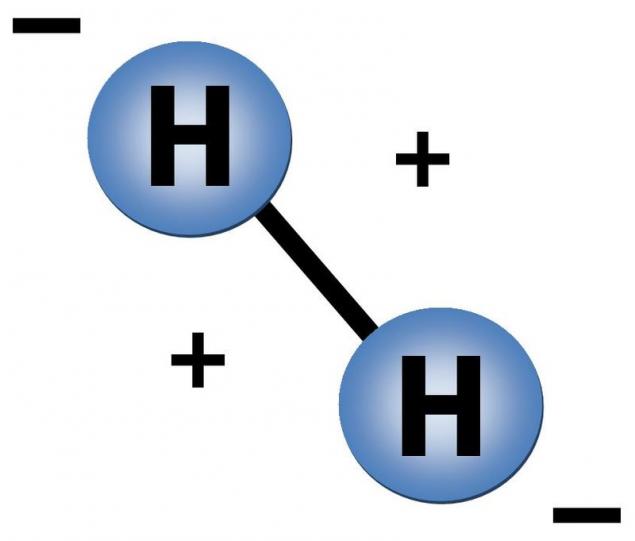
"Nature uses the minimum, the minimum mechanism that you can imagine to give particles their mass, their electric charge and so on," says Turk.
20th century physics has taught us that if you increase the accuracy and delve into the quantum world, you'll find a zoo of new particles. Since experimental results have produced a variety of quantum information, theoretical models predicted more and more particles and forces. But now we have reached a crossroads where many of our leading theoretical ideas about what lies "beyond" our current understanding of physics would expect some experimental results that confirm the predictions.
"We found ourselves in a strange situation when the universe speaks to us; it tells us that it is extremely simple. At the same time, theories that were popular (the last 100 years of physics) have become more complex, arbitrary, and unpredictable," he says.
Turk points to the string theory, which has been declared as "final theory of unification", packing all the secrets of the universe into a neat package. And to search for evidence of inflation — the rapid expansion of the Universe, which she experienced almost immediately after the Big Bang about 14 billion years ago — in the form of primary gravitational waves etched on the cosmic microwave background, "echo" of the Big Bang. But since we are looking for experimental evidence, we're grasping at straws; experimental evidence is simply not consistent with our unbearably complicated theories.
Our space prochoiceamerica the work of the Turk assigned to the origin of the Universe, a topic that attracted a lot of attention in recent months.
Last year the BICEP2 collaboration, which uses a telescope located at the South Pole to study cosmic microwave background radiation, announced the detection of primary signals of gravitational waves. This kind of "Holy Grail" of cosmology — the discovery of gravitational waves generated by the Big Bang, could confirm the inflationary theory of the Universe. But, unfortunately for the BICEP2 team, they announced the "discovery" before the European Planck space telescope (which is also a map of the microwave background) have shown that the BICEP2 signal was caused by dust in our galaxy and not by ancient gravitational waves.
What if the primary gravitational waves will never find? Many theorists who have pinned their hopes on the Big Bang with the subsequent period of rapid inflation, may be disappointed, but, according to Turok, "this is a powerful hint that the Big Bang (in the classical sense) may not be the absolute beginning of the Universe.
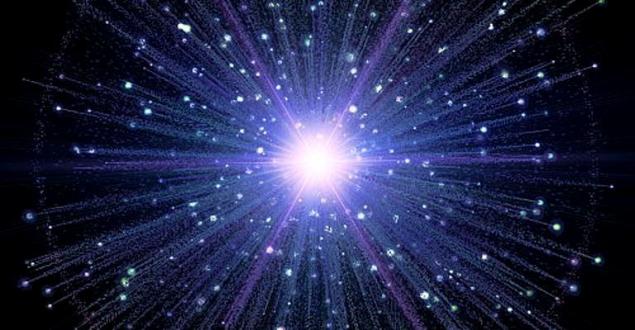
"The hardest part for me is to describe the Big Bang mathematically," adds Turk.
Perhaps the cyclic model of the universe — when the universe collapses and starts over again to better suit the observations. Such models necessarily produce the primary gravitational waves and if these waves are not detected, perhaps our theory of inflation need to be improved.
As for gravitational waves, which are predicted, made rapid movement of massive objects in our modern Universe, the Turks believe that we have reached such a degree of sensitivity that our detectors should soon find them, confirming one of the predictions of Einstein on the topic of space-time. "We expect to see gravitational waves from the collisions of black holes in the next five years."
The next revolution?From the largest to the smallest scales, the universe seems to be "scale-free" — in other words, at whatever spatial or energy scale seen around there in the scale of nothing special." This conclusion speaks in favor of the fact that the Universe is much more simple nature than is assumed by current theory.
"This is a crisis, but the crisis in the best possible way," says Turk.
Thus, to explain the origin of the Universe and come to terms with some of the most puzzling mysteries of our Universe, like dark matter and dark energy, we may have completely different look to the space. This will require a revolution in the understanding of physics, a revolutionary approach, the strength comparable to Einstein's realization that space and time are two sides of the same coin, when was formed the General theory of relativity.
"We have a very different view of fundamental physics. It's time for radically new ideas," concludes the Turks, noting that now is the perfect time for young people to engage in theoretical physics, because it is the next generation is likely to revolutionize our understanding of the Universe.published
P. S. And remember, only by changing their consumption — together we change the world! © Join us at Facebook , Vkontakte, Odnoklassniki
Source: hi-news.ru
This conclusion may seem counterintuitive: in the end, to understand the true complexity of Nature, we have to think outside the box, explore things in more and more small scale, to add new variables in the equations to come up with "new" and "exotic" physics.
Someday we will figure out what dark matter is, get an idea of the whereabouts of gravitational waves — if only our theoretical model will become more developed and more... complicated.

Not so, says Neil Turok, Director of the Institute for theoretical physics Perimeter in Ontario, Canada. According to Turk, if the universe, on the large and small scale, about something speaks to us, it's about its incredible simplicity. But to fully realize this, we need a revolution in physics.
In an interview with Discovery of Turks said that the major discoveries of recent decades have confirmed the structure of the Universe on cosmological and quantum scales.
"On a large scale, we made a map of the whole sky — the cosmic microwave background and measured the evolution of the Universe, its evolution, the process of its expansion... and these discoveries show that the universe is strikingly simple," he says. In other words, can you describe the structure of the Universe, its geometry, the density of matter is just a number".
The most exciting conclusion of this reasoning is that to describe the geometry of the Universe is just a single number is easier than to describe numerically the simplest known atom — the hydrogen atom. The geometry of the hydrogen atom is described by three numbers, which arise from quantum features of the electron orbiting around the proton.
"This tells us that the universe is smooth, but has a small level of fluctuations is described by this number. And that's all. The universe — the simplest thing we know."
Somewhere out there, on the opposite end of the scale, something similar happened when physicists explored the Higgs field, using the most complex machine ever built — the Large hadron Collider. In 2012, when historically, physics has discovered a particle, the mediator of the Higgs field — the Higgs boson — it was the simplest type, described by Standard model particles.

"Nature uses the minimum, the minimum mechanism that you can imagine to give particles their mass, their electric charge and so on," says Turk.
20th century physics has taught us that if you increase the accuracy and delve into the quantum world, you'll find a zoo of new particles. Since experimental results have produced a variety of quantum information, theoretical models predicted more and more particles and forces. But now we have reached a crossroads where many of our leading theoretical ideas about what lies "beyond" our current understanding of physics would expect some experimental results that confirm the predictions.
"We found ourselves in a strange situation when the universe speaks to us; it tells us that it is extremely simple. At the same time, theories that were popular (the last 100 years of physics) have become more complex, arbitrary, and unpredictable," he says.
Turk points to the string theory, which has been declared as "final theory of unification", packing all the secrets of the universe into a neat package. And to search for evidence of inflation — the rapid expansion of the Universe, which she experienced almost immediately after the Big Bang about 14 billion years ago — in the form of primary gravitational waves etched on the cosmic microwave background, "echo" of the Big Bang. But since we are looking for experimental evidence, we're grasping at straws; experimental evidence is simply not consistent with our unbearably complicated theories.
Our space prochoiceamerica the work of the Turk assigned to the origin of the Universe, a topic that attracted a lot of attention in recent months.
Last year the BICEP2 collaboration, which uses a telescope located at the South Pole to study cosmic microwave background radiation, announced the detection of primary signals of gravitational waves. This kind of "Holy Grail" of cosmology — the discovery of gravitational waves generated by the Big Bang, could confirm the inflationary theory of the Universe. But, unfortunately for the BICEP2 team, they announced the "discovery" before the European Planck space telescope (which is also a map of the microwave background) have shown that the BICEP2 signal was caused by dust in our galaxy and not by ancient gravitational waves.
What if the primary gravitational waves will never find? Many theorists who have pinned their hopes on the Big Bang with the subsequent period of rapid inflation, may be disappointed, but, according to Turok, "this is a powerful hint that the Big Bang (in the classical sense) may not be the absolute beginning of the Universe.

"The hardest part for me is to describe the Big Bang mathematically," adds Turk.
Perhaps the cyclic model of the universe — when the universe collapses and starts over again to better suit the observations. Such models necessarily produce the primary gravitational waves and if these waves are not detected, perhaps our theory of inflation need to be improved.
As for gravitational waves, which are predicted, made rapid movement of massive objects in our modern Universe, the Turks believe that we have reached such a degree of sensitivity that our detectors should soon find them, confirming one of the predictions of Einstein on the topic of space-time. "We expect to see gravitational waves from the collisions of black holes in the next five years."
The next revolution?From the largest to the smallest scales, the universe seems to be "scale-free" — in other words, at whatever spatial or energy scale seen around there in the scale of nothing special." This conclusion speaks in favor of the fact that the Universe is much more simple nature than is assumed by current theory.
"This is a crisis, but the crisis in the best possible way," says Turk.
Thus, to explain the origin of the Universe and come to terms with some of the most puzzling mysteries of our Universe, like dark matter and dark energy, we may have completely different look to the space. This will require a revolution in the understanding of physics, a revolutionary approach, the strength comparable to Einstein's realization that space and time are two sides of the same coin, when was formed the General theory of relativity.
"We have a very different view of fundamental physics. It's time for radically new ideas," concludes the Turks, noting that now is the perfect time for young people to engage in theoretical physics, because it is the next generation is likely to revolutionize our understanding of the Universe.published
P. S. And remember, only by changing their consumption — together we change the world! © Join us at Facebook , Vkontakte, Odnoklassniki
Source: hi-news.ru





